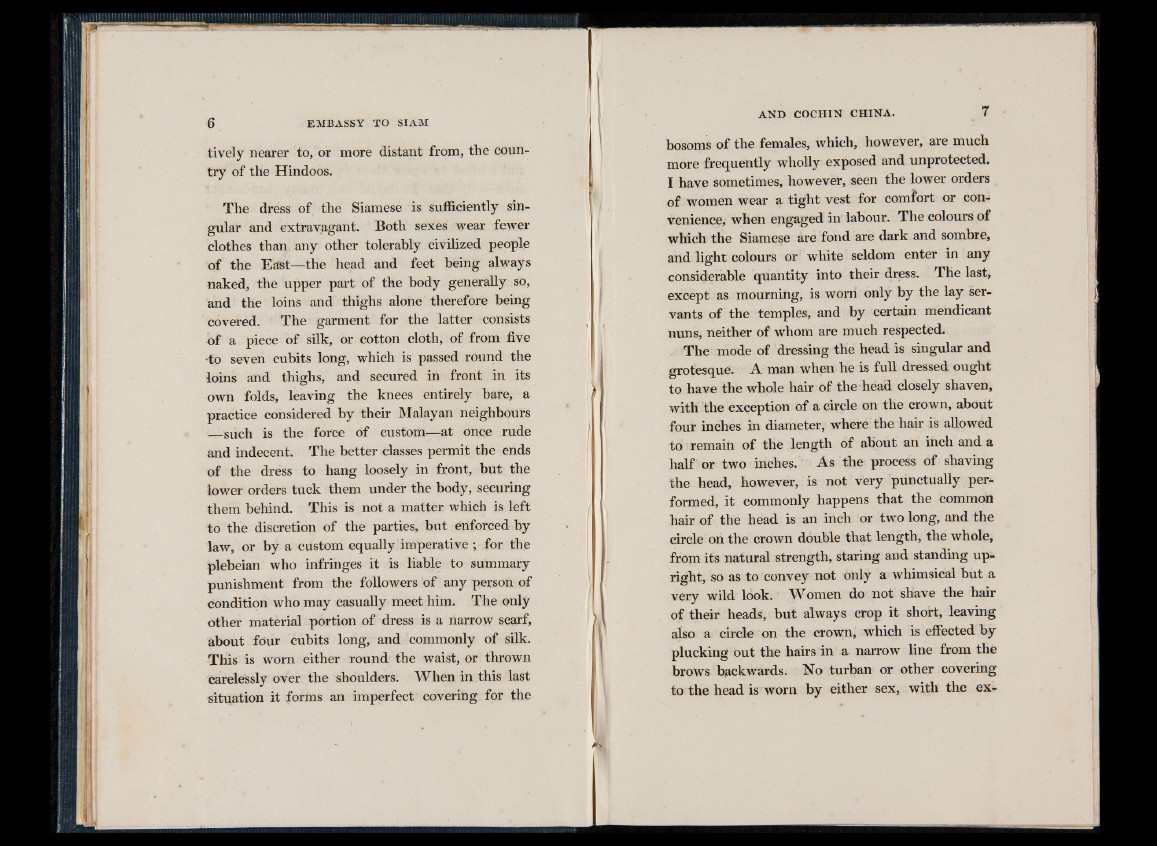
tively nearer to, or more distant from, the country
of the Hindoos.
The dress of the Siamese is sufficiently singular
and extravagant. Both sexes wear fewer
clothes than, any other tolerably civilized people
of the East—the head and feet being always
naked, the upper part of the body generally so,
and the loins and thighs alone therefore being
covered. The garment for the latter consists
o f a piece of silk, or cotton cloth, of from five
to seven cubits long, which is passed round the
loins and thighs, and secured in front in its
own folds, leaving the knees entirely bare, a
practice considered by their Malayan neighbours
—such is the force of custom—at once rude
and indecent. The better classes permit the ends
of the dress to hang loosely in front, but the
lower orders tuck them under the body, securing
them behind. This is not a matter which is left
to the discretion of the parties, but enforced by
law, or by a custom equally imperative; for the
plebeian who infringes it is liable to summary
punishment from the followers of any person of
condition who may casually meet him. The only
other material portion of dress is a narrow scarf,
about four cubits long, and commonly of silk.
This is worn either round the waist, or thrown
carelessly over the shoulders. When in this last
situation it forms an imperfect covering for the
AND COCHIN CHINA. 7
bosoms of the females, which, however, are much
more frequently wholly exposed and unprotected.
I have sometimes, however, seen the lower orders
of women wear a tight vest for comfort or convenience,
when engaged in labour. The colours of
which the Siamese are fond are dark and sombre,
and light colours or white seldom enter in any
considerable quantity into their dress. The last,
except as mourning, is worn only by the lay servants
of the temples, and by certain mendicant
nuns, neither of whom are much respected.
The mode of dressing the head is singular and
grotesque. A. man when he is full dressed ought
to have the whole hair of the head closely shaven,
with the exception of a circle on the crown, about
four inches in diameter, where the hair is allowed
to remain of the length of about an inch and a
half or two inches. As the process of shaving
the head, however, is not very punctually performed,
it commonly happens that the common
hair of the head is an inch or two long, and the
circle on the crown double that length, the whole,
from its natural strength, staring and standing upright,
so as to convey not only a whimsical but a
very wild look. Women do not shave the hair
of their heads, but always crop it short, leaving
also a circle on the crown, which is effected by
plucking out the hairs in a narrow fine from the
brows backwards. No turban or other covering
to the head is worn by either sex, with the ex